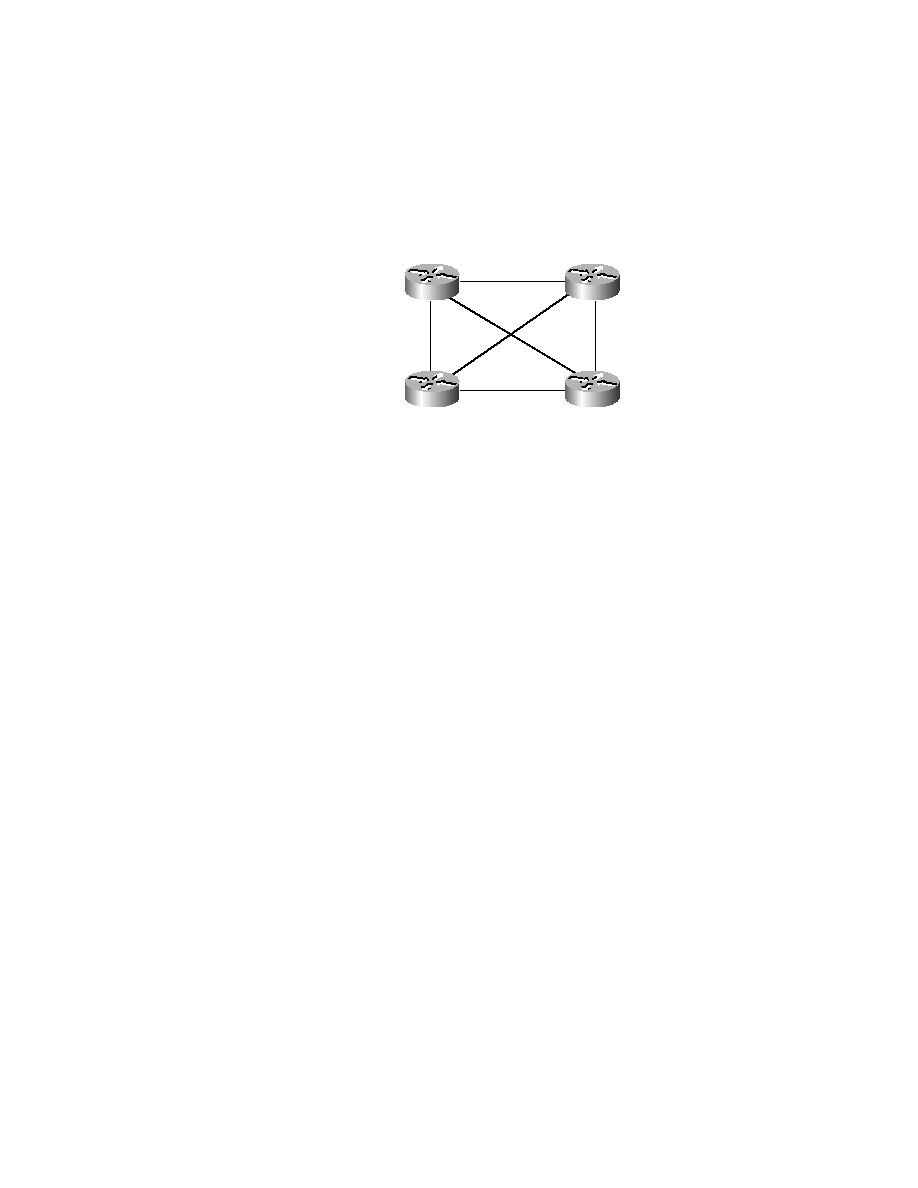
and BDR have been chosen, the meshed networks act as a broadcast net-
work. All LSA updates are sent to the DR and BDR, and the DR floods the
updates out every interface.
communication is also halted between the two adjacent peers.
ured. This is the default setting for the router. By manually configuring each
neighbor, OSPF knows exactly which neighbors need to participate and
which neighbor is identified as the DR. Also, communication between neigh-
bors is done via unicast instead of multicast. This configuration also requires
a full mesh and has the same weakness as the broadcast environment.
to-point connections with other OSPF neighbors. No DR or BDR is elected
since the link is treated as a point-to-point circuit. This allows for faster
convergence.